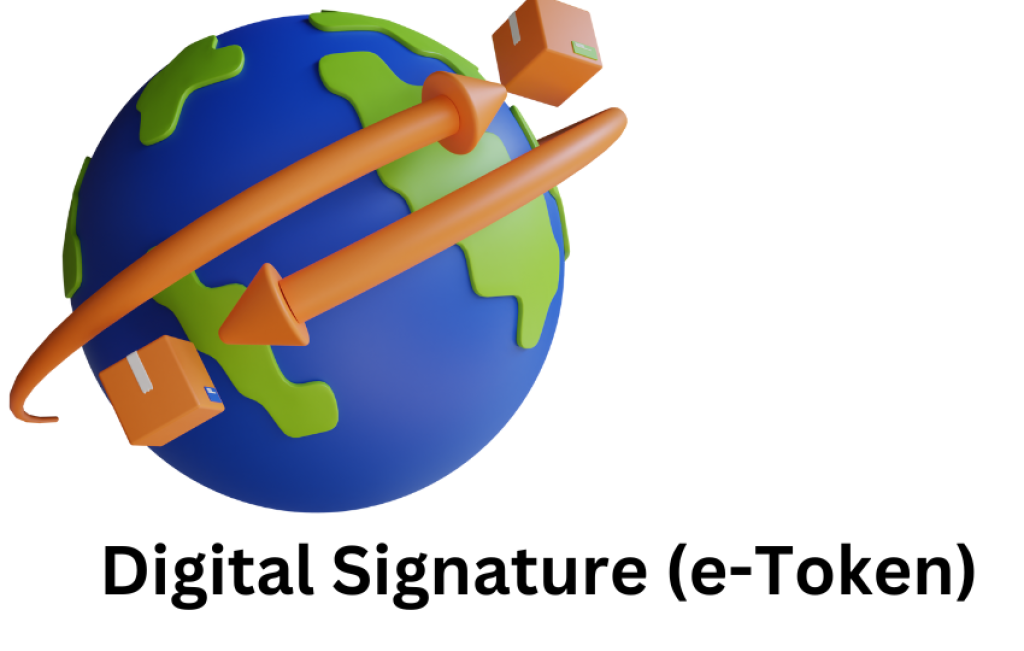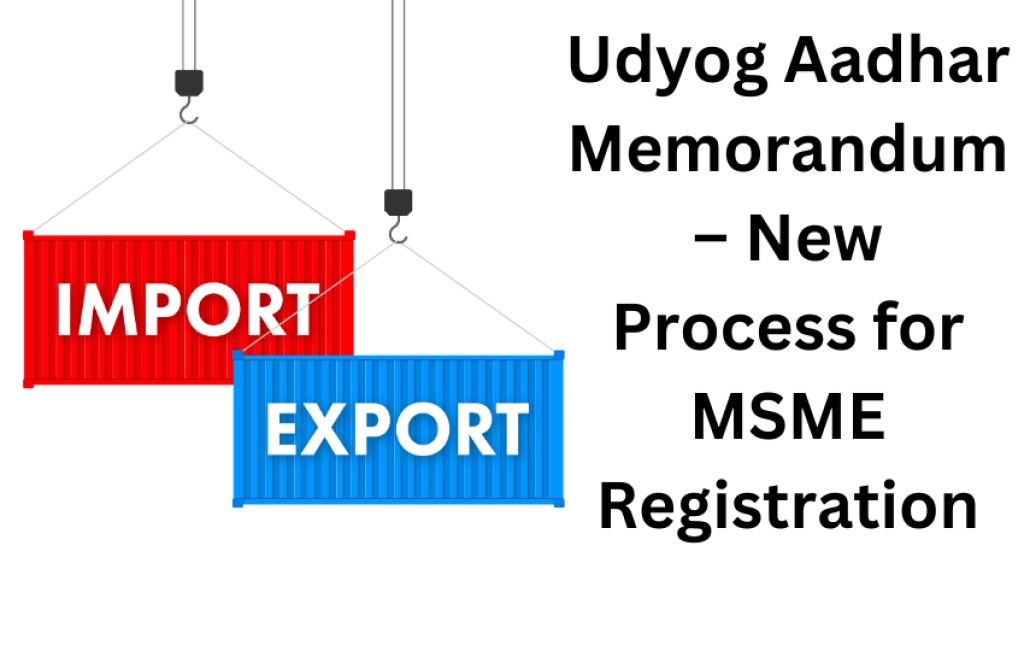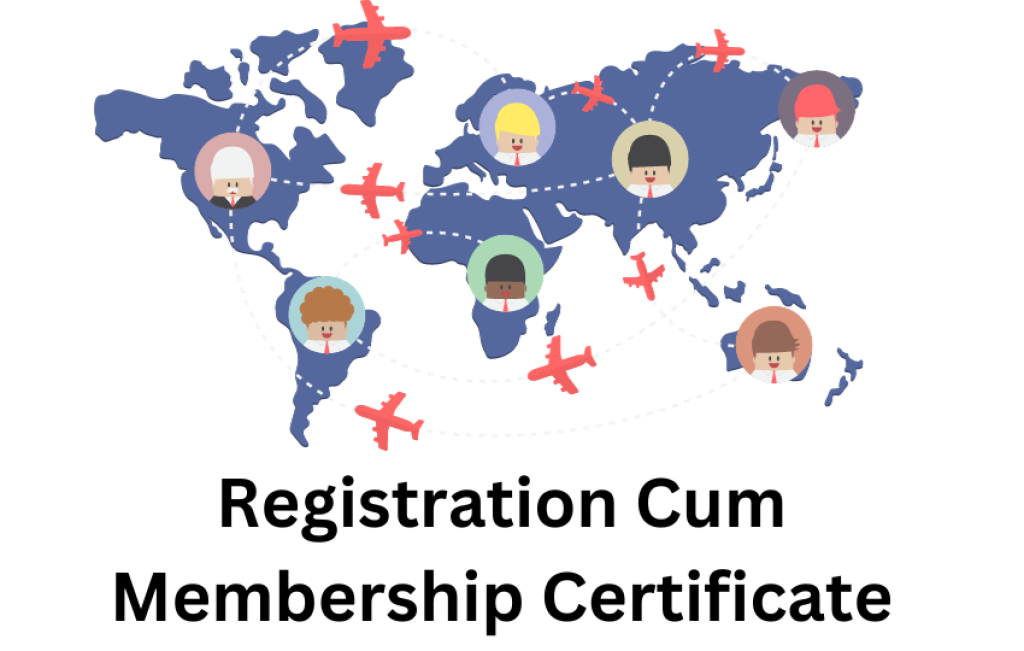Primary Certifications
DGFT Consultancy
Primary Certifications
Its include Digital signature (e-Token), Industrial Entrepreneur Memorandum (IEM), Udyog Registration (MSME) and Registration Cum Membership Certificate
Digital Signature
(IEM) Industrial Entrepreneur Memorandum
Udyog Aadhar (MSME)
Registration Cum Membership Certificate
Digital Signature (e-Token)
In today’s ever-changing digital world, a digital signature acts like a virtual version of your handwritten signature. It lets people and businesses sign all sorts of digital documents and transactions, making things more convenient and secure. But to create a digital signature, you need something called a valid digital certificate. Think of it as your digital guardian, making sure no one can sneak a peek at or mess with your signed data or transactions without permission.
These digital signatures aren’t just about security; they also speed up processes, especially at places like the Directorate General of Foreign Trade (DGFT). Here, where they deal with tons of transactions and applications every day, digital signatures make things faster and more efficient.
DGFT, being a trailblazer in going digital, allows folks to submit online applications using what they call Class II digital signatures, which include a special IEC number. This number makes the digital signature even more trustworthy. DGFT trusts certain groups like (n) Code, e-Mudra, and Safescrypt to issue these digital signatures and keep everything legit.
What’s cool about DGFT is they’re super flexible. Digital signatures aren’t just for applications; you can use them for other stuff like asking questions or handling eBRC data. If you have a Class II or higher digital signature certificate approved by the Controller of Certifying Authority of India, DGFT will gladly accept it for these non-application tasks.
In a nutshell, using digital signatures doesn’t just make things more secure; it also makes DGFT’s digital world run smoother. It’s like taking a big step towards making international trade and business more efficient, transparent, and secure.


(IEM) Industrial Entrepreneur Memorandum
What is an IEM?
The Industrial Entrepreneurs Memorandum (IEM) is an important document that marks the beginning of commercial production. To formalize this recognition, individuals or entities need to complete and submit the IEM application. This application is vital because it not only signifies the start of commercial production but also provides essential information about the industrial project.
Submitting the IEM application is necessary to meet regulatory requirements, ensuring transparency and compliance. It allows authorities to monitor industrial activities and developments. Moreover, the IEM application process promotes communication between industrial ventures and government agencies, facilitating the exchange of information and regulatory oversight.
In summary, the IEM application is a crucial starting point for industrial entrepreneurs. It bridges the gap between the private sector and government authorities while accurately recording and acknowledging the commencement of commercial production.
2. What is the eligibility for getting IEM?
Large-scale industries, which involve significant investments exceeding Rs. 50 crores in manufacturing or Rs. 5 crores in services, are exempt from certain licensing requirements, especially for non-SSI reserved items. However, they are required to submit an Industrial Entrepreneurs Memorandum (IEM) as a formal declaration of their intention to start commercial production. This step ensures compliance with regulations and maintains transparency and accountability within these large-scale industries. In summary, despite their licensing exemption in some areas, these industries must complete the IEM application, following regulatory guidelines and showing their commitment to commencing operations.
3. In which case thus the IEM is required?
The promoter can submit an Industrial Entrepreneurs Memorandum (IEM) in different situations:
- To start a new industrial project.
- To back a significant expansion of an existing industrial business.
- When beginning to manufacture a new product.
- To keep running Small Scale Industries (SSI) units while shifting to large-scale industry.
4. What is the procedure for filling of IEM?
To start the process, the promoter needs to fill out an application in the specified format and include the required fee in the form of a Demand Draft.
5. What will be the steps after filling IEM?
After submitting your IEM application, you’ll get an acknowledgment receipt. Share this receipt with the Director of Industries, and once you’ve done that, you can start setting up your industrial unit.
6. What is the main role of Directorate of Industries?
The Secretariat for Industrial Assistance (SIA) in New Delhi has a crucial role in this process. To begin, SIA shares an office memo that contains an application, asking for input from the Directorate of Industries. This is especially important when assessing the project’s location. For a thorough evaluation, the Directorate of Industries relies on getting the necessary documents and certificates from the project promoters.
It’s worth noting that industrial promoters who have obtained an IEM (Industrial Entrepreneur Memorandum) and started commercial production or finished the project have an extra task. They must diligently submit PART B to either the Government of India (GOI) or the Directorate of Industries, providing seven copies for comprehensive record-keeping.
7. What is an IL and is the eligibility for IL?
To set up industrial units under the IDR Act (Industrial Development Regulation Act) of 1951 by the Indian Government, you can choose between obtaining an Industrial License or a Letter of Intent. These activities are divided into three categories. Firstly, some activities are controlled and run by the government, falling under the public sector. Secondly, there is a list of activities in Annex-II that require strict regulation and oversight. Thirdly, certain activities are designated to support the growth of Small Scale Industries (SSI). It’s crucial to follow these regulations when establishing industrial units governed by the IDR Act.
8. Which activities are reserved under the public sector?
Certain specific restrictions are enforced under the IDR Act. It’s essential to be aware of these limitations, which include:
1. Restricted Items: The act prohibits dealing with arms, ammunition, defense equipment, aircraft, and warships.
2. Atomic Energy: Anything related to atomic energy is also restricted.
3. Government Notification: Substances listed in a government notification dated March 15, 1995, are subject to restrictions.
4. Railway Transport: Dealing with railway transport is another area under restriction.
These are the key restrictions individuals should remember when it comes to the IDR Act.
9. What is the procedure for filling of the IL?
1. Fill Out the Form: Firstly, complete an application form.
2. Include Payment: Secondly, include a Demand Draft.
These simple steps will kickstart the application process.
10. What will be the further steps after filling an IL?
After the Government of India (GOI) receives applications for Industrial Licenses (IL), they pass them on to the Licensing Committee. This committee reviews the applications and, once it has obtained necessary confirmations from the State Government, proceeds with the approval process for the licenses.
11. What is the role of the Directorate of Industries?
This process involves providing essential guidance, coordinating efforts effectively, and submitting reports to the Government of India.
(IEM) Industrial Entrepreneur Memorandum
What is an IEM?
The Industrial Entrepreneurs Memorandum (IEM) is an important document that marks the beginning of commercial production. To formalize this recognition, individuals or entities need to complete and submit the IEM application. This application is vital because it not only signifies the start of commercial production but also provides essential information about the industrial project.
Submitting the IEM application is necessary to meet regulatory requirements, ensuring transparency and compliance. It allows authorities to monitor industrial activities and developments. Moreover, the IEM application process promotes communication between industrial ventures and government agencies, facilitating the exchange of information and regulatory oversight.
In summary, the IEM application is a crucial starting point for industrial entrepreneurs. It bridges the gap between the private sector and government authorities while accurately recording and acknowledging the commencement of commercial production.
2. What is the eligibility for getting IEM?
Large-scale industries, which involve significant investments exceeding Rs. 50 crores in manufacturing or Rs. 5 crores in services, are exempt from certain licensing requirements, especially for non-SSI reserved items. However, they are required to submit an Industrial Entrepreneurs Memorandum (IEM) as a formal declaration of their intention to start commercial production. This step ensures compliance with regulations and maintains transparency and accountability within these large-scale industries. In summary, despite their licensing exemption in some areas, these industries must complete the IEM application, following regulatory guidelines and showing their commitment to commencing operations.
3. In which case thus the IEM is required?
The promoter can submit an Industrial Entrepreneurs Memorandum (IEM) in different situations:
- To start a new industrial project.
- To back a significant expansion of an existing industrial business.
- When beginning to manufacture a new product.
- To keep running Small Scale Industries (SSI) units while shifting to large-scale industry.
4. What is the procedure for filling of IEM?
To start the process, the promoter needs to fill out an application in the specified format and include the required fee in the form of a Demand Draft.
5. What will be the steps after filling IEM?
After submitting your IEM application, you’ll get an acknowledgment receipt. Share this receipt with the Director of Industries, and once you’ve done that, you can start setting up your industrial unit.
6. What is the main role of Directorate of Industries?
The Secretariat for Industrial Assistance (SIA) in New Delhi has a crucial role in this process. To begin, SIA shares an office memo that contains an application, asking for input from the Directorate of Industries. This is especially important when assessing the project’s location. For a thorough evaluation, the Directorate of Industries relies on getting the necessary documents and certificates from the project promoters.
It’s worth noting that industrial promoters who have obtained an IEM (Industrial Entrepreneur Memorandum) and started commercial production or finished the project have an extra task. They must diligently submit PART B to either the Government of India (GOI) or the Directorate of Industries, providing seven copies for comprehensive record-keeping.
7. What is an IL and is the eligibility for IL?
To set up industrial units under the IDR Act (Industrial Development Regulation Act) of 1951 by the Indian Government, you can choose between obtaining an Industrial License or a Letter of Intent. These activities are divided into three categories. Firstly, some activities are controlled and run by the government, falling under the public sector. Secondly, there is a list of activities in Annex-II that require strict regulation and oversight. Thirdly, certain activities are designated to support the growth of Small Scale Industries (SSI). It’s crucial to follow these regulations when establishing industrial units governed by the IDR Act.
8. Which activities are reserved under the public sector?
Certain specific restrictions are enforced under the IDR Act. It’s essential to be aware of these limitations, which include:
1. Restricted Items: The act prohibits dealing with arms, ammunition, defense equipment, aircraft, and warships.
2. Atomic Energy: Anything related to atomic energy is also restricted.
3. Government Notification: Substances listed in a government notification dated March 15, 1995, are subject to restrictions.
4. Railway Transport: Dealing with railway transport is another area under restriction.
These are the key restrictions individuals should remember when it comes to the IDR Act.
9. What is the procedure for filling of the IL?
1. Fill Out the Form: Firstly, complete an application form.
2. Include Payment: Secondly, include a Demand Draft.
These simple steps will kickstart the application process.
10. What will be the further steps after filling an IL?
After the Government of India (GOI) receives applications for Industrial Licenses (IL), they pass them on to the Licensing Committee. This committee reviews the applications and, once it has obtained necessary confirmations from the State Government, proceeds with the approval process for the licenses.
11. What is the role of the Directorate of Industries?
This process involves providing essential guidance, coordinating efforts effectively, and submitting reports to the Government of India.

Udyog Aadhar Memorandum – New Process for MSME Registration
Facilitation Authority : Ministry of MSME, Govt. of India
Effective from : 1st July, 2020
How to apply : Online only – www.udyamregistration.gov.in
Revised MSME Limits:
| Classification | Micro | Small | Medium |
| Manufacturing (OR) Services sector | Investment below Rs. 1 Cr & Turnover below Rs. 5 Cr | Investment below Rs. 10 Cr & Turnover below Rs. 50 Cr | Invest. below Rs. 50 Cr & Turnover below Rs. 250 Cr |
| Important Point in MSME : | |||
| 1.nvestment, in essence, entails the allocation of financial resources into tangible assets such as machinery or equipment. | |||
| 2. Tangible assets, on the other hand, exclude components such as land, buildings, furniture, and fittings. | |||
| 3. You have the flexibility to utilize both brand-new and previously owned machinery or equipment, and the best part is that there won’t be any GST (Goods and Services Tax) applied to them. | |||
Note for MSME:
- If multiple units share the same GSTIN and PAN, they are considered a single Enterprise.
- The turnover and investment from all these units are combined to determine if they are micro, small, or medium enterprises.
- Each Enterprise can have only one Udyam Registration, but it can include multiple activities within that single registration.
Calculation of “Investment in P & M or Equipment”:
| In case of Existing Enterprises | In case of New Enterprises |
| As per Income Tax Return (ITR) of the previous years filed under IT Act 1961. | Based on “Self-declaration of the Promoter of the Enterprises”.Note: above relaxation shall be end after 31st march of the financial year in which it files its first ITR. |
Calculation of “Turnover”: The turnover amount doesn’t count the money you make from exporting goods or services. It only includes what you earn from selling things domestically without GST, as per your Income Tax Return
MSME Effect on Existing Enterprises:
| 1 | Existing enterprises means | Who are already registered under EM-Part-II or UAM |
| 2 | If Existing Enterprises already registered before 30.06.2020 | a. It shall be Re-Classified as Micro, Small or Medium.b. But shall be continue to be valid only up to 31.03.2021. |
Points to be noted in MSME :
-
-
- In case of “lower to higher category”: (i.e. Micro – to small or medium, Small – to medium)
-
-
- The enterprise will be assigned to the relevant category based on its eligibility, specifically, a higher category.
-
- Enterprise will maintain its prevailing status at least 1 year from the close of the year of registration.In case of “Higher to lower category”: (i.e. Medium – to small or micro, Small – to micro)
-
-
- In case of “lower to higher category”: (i.e. Micro – to small or medium, Small – to medium)
-
- Firstly, the enterprise will be categorized based on its eligibility, which could include placement in a lower category. Secondly, the enterprise will remain within its current category until the conclusion of the financial year, irrespective of its registration status. Lastly, benefits will commence from the 1st of April in the financial year following the one in which this categorization change occurred.
Single window Systems: (For Grievance Redressal of Enterprises)
Guidance and Support Centers for MSME :
-
- The Champions Control Rooms & offices of the Ministry of MSME, in collaboration with the Development Institutes (MSME – DI), are your main points of contact for registration. They work as a single-window system to provide assistance.
Local Assistance:
-
- Additionally, in your district, the DICs (District Industries Centers) also act as single-window facilitation systems.
Issue Resolution:
-
- In case you encounter any problems or have complaints, the General Manager of the DIC in your district will conduct investigations to address your concerns.
-
- If necessary, they will escalate the matter to the Director, Commissioner, or Industry Secretary of the State Government.
-
- The State Government has the authority to update your information or provide recommendations to the Ministry of MSME.
Effective Process of MSME :
-
- This structured process ensures effective support and issue resolution during the registration process.
These support mechanisms are designed to make your registration process smoother and provide assistance whenever needed.
Check list for MSME :
-
- Only Aadhaar number will be enough for registration.
| In case of proprietorship firm | For registration, it’s essential to furnish the Aadhaar number of the proprietor. |
| In case of Partnership firm | You must provide the Aadhaar number of the managing partner. |
| In case of HUF | The Aadhaar number of the head of the Hindu Undivided Family (HUF), known as the ‘Karta,’ is needed. |
| In case of company / LLP / Co-operative society / Trust | You need to provide the Aadhaar number, GSTIN (Goods and Services Tax Identification Number), and PAN (Permanent Account Number) of the authorized signatory. |
-
- PAN & GST number mandatory from 01.04.2021.
Benefits for Registered Udyam (MSME) Holders:
Tax Benefits:
Furthermore, you can benefit from tax concessions based on your state’s laws, including octroi. Additionally, claim exemptions from fees like stamp duty and registration fees, and enjoy direct tax exemptions under applicable laws.
Financial Support:
Benefit from a 1% overdraft interest rate exemption. Additionally, you can receive reimbursement for ISO certificate expenses. Moreover, access bank mortgages and business loans with favorable interest rates (up to 1.5% lower).
Production and Business Advantages:
Product reservation exclusively for MSME and SSI involves setting aside specific products for manufacturing by these entities. Additionally, with exemptions in place, it becomes easy to apply for government tenders. Furthermore, Udyam-registered businesses receive preference when obtaining licenses, approvals, and registrations, streamlining the process. By ensuring protection against delayed payments, you can safeguard your interests when it comes to payments for materials or services. Moreover, subsidies for patent registration are available, along with the opportunity to secure 100% collateral-free loans from all banks. Additionally, these businesses receive special consideration at international trade fairs and benefit from subsidies for bar code registration, security deposit waivers, and concessions in electricity bills. These advantages are crucial for the growth and success of MSMEs and SSIs.
Industry and Supportive Measures:
Furthermore, registered Udyam holders can enjoy subsidies such as tariff, tax, and capital subsidies. Additionally, they can access lower interest rates on bank loans through interest rate subsidies. Moreover, they qualify for benefits under various Central and State Government Schemes, including eligibility for Industrial Promotion Subsidies (IPS).
MSME-Specific Advantages:
-
- Entities registered as MSMEs can qualify for CLCSS (credit-linked capital subsidy scheme) and various other benefits.
These benefits can significantly enhance your MSME or SSI business, offering financial relief and support across various aspects of your operations.


Registration Cum Membership Certificate (RCMCs)
Anyone seeking permission to import, export, or gain benefits under FTP, unless specifically exempted, must consider RCMC as a crucial requirement.
Competent Registering Authorities, which are Export Promotion Councils or Commodity Boards, grant RCMC following the procedures outlined in the Handbook of Procedures.
To obtain RCMC, an exporter can register and join an Export Promotion Council (EPC). Once accepted as a member, they receive RCMC in a specific format. Those aspiring to export can also register and become associate members of an EPC.
There are 37 Export Promotion Councils and Commodity Boards, each overseeing particular product segments. When applying for RCMC, an exporter needs to declare their main line of business and apply to the Council relevant to that line
Special Cases for Registration Cum Membership Certificate :
- If your export product isn’t covered by any Export Promotion Council (EPC) or Commodity Board, you have an option. You can get a Registration-cum-Membership Certificate (RCMC) from the Federation of Indian Exporters Organization (FIEO).
- Now, if you’re an exporter dealing with multiple products and haven’t decided on your main business line yet, you can also obtain RCMC from FIEO.
- But here’s a special case: If you’re a multi-product exporter with your main office in the North Eastern States, you can get RCMC from the Shellac & Forest Products Export Promotion Council, except for products overseen by APEDA, Spice Board, and Tea Board.
- Lastly, if you’re exporting Handicrafts and Handloom products from the state of Jammu & Kashmir, you should know that the Director of Handicrafts, Government of Jammu & Kashmir, is the one who can issue the RCMC for you.
Validity of Registration Cum Membership Certificate :
RCMC will remain valid for five years unless specified otherwise.
Here are important points to remember for Registration Cum Membership Certificate :
RCMC holders must promptly notify the registering authority of any changes in their business, such as ownership, address, or name, within one month of these changes. Exporters must submit quarterly returns and provide information about their exports, including various commodities, to the appropriate registering authority.
Registration Authorities
These organizations, such as the Apparel Export Promotion Council (AEPC) and the Basic Chemicals, Pharmaceuticals, and Cosmetics Export Promotion Council (CHEMEXCIL), play a crucial role. They oversee various aspects of the export industry and have the important task of both promoting and regulating exports within their specific domains.
Registration Cum Membership Certificate (RCMCs)
Anyone seeking permission to import, export, or gain benefits under FTP, unless specifically exempted, must consider RCMC as a crucial requirement.
Competent Registering Authorities, which are Export Promotion Councils or Commodity Boards, grant RCMC following the procedures outlined in the Handbook of Procedures.
To obtain RCMC, an exporter can register and join an Export Promotion Council (EPC). Once accepted as a member, they receive RCMC in a specific format. Those aspiring to export can also register and become associate members of an EPC.
There are 37 Export Promotion Councils and Commodity Boards, each overseeing particular product segments. When applying for RCMC, an exporter needs to declare their main line of business and apply to the Council relevant to that line
Special Cases for Registration Cum Membership Certificate :
- If your export product isn’t covered by any Export Promotion Council (EPC) or Commodity Board, you have an option. You can get a Registration-cum-Membership Certificate (RCMC) from the Federation of Indian Exporters Organization (FIEO).
- Now, if you’re an exporter dealing with multiple products and haven’t decided on your main business line yet, you can also obtain RCMC from FIEO.
- But here’s a special case: If you’re a multi-product exporter with your main office in the North Eastern States, you can get RCMC from the Shellac & Forest Products Export Promotion Council, except for products overseen by APEDA, Spice Board, and Tea Board.
- Lastly, if you’re exporting Handicrafts and Handloom products from the state of Jammu & Kashmir, you should know that the Director of Handicrafts, Government of Jammu & Kashmir, is the one who can issue the RCMC for you.
Validity of Registration Cum Membership Certificate :
RCMC will remain valid for five years unless specified otherwise.
Here are important points to remember:
RCMC holders must promptly notify the registering authority of any changes in their business, such as ownership, address, or name, within one month of these changes. Exporters must submit quarterly returns and provide information about their exports, including various commodities, to the appropriate registering authority.
Registration Authorities
These organizations, such as the Apparel Export Promotion Council (AEPC) and the Basic Chemicals, Pharmaceuticals, and Cosmetics Export Promotion Council (CHEMEXCIL), play a crucial role. They oversee various aspects of the export industry and have the important task of both promoting and regulating exports within their specific domains.
 Next Page
Next Page

